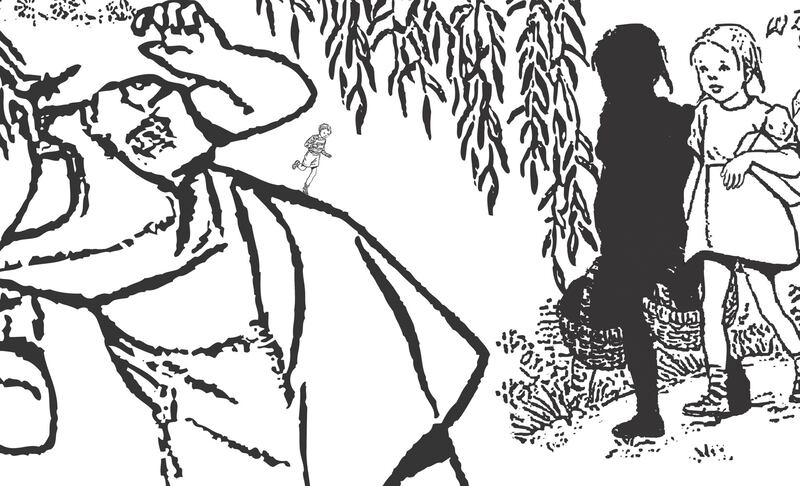The new work for HERE at Belfast Exposed is situated within the context of site. The gallery and photographic archives are specific sites, with visible and invisible histories. They also mark places from which to draw a line through time from there to HERE and from HERE outwards across the globe where influence and connections were sought and felt.
From the first maternity hospital run by women and opened in 1794, The Lying-in Hospital situated next door to Belfast Exposed, the lives of women and children come to the fore, referenced in Dialogue, Diptych, Janet’s & John’s Plates and Learning to Read, Northern Ireland, 1971.
Then to the ‘Society for Promoting Knowledge’, whose members included Henry Joy McCracken, United Irishman, and Edward Bunting, Irish musician and folklore collector, both organisers of the famous Harp Festival of 1792, held in the assembly rooms in nearby Waring Street. They hailed the French Declaration of the Rights of Man, American liberties, and the new Polish Constitution within their resolutions as well as supporting Catholic Emancipation and parliamentary reform.

And on to Mary Ann McCracken, sister of Henry Joy, who fought for the abolition of slavery while working with the poor in Belfast. Both went to school on the street that is home to Belfast Exposed. The legacy of these people can be seen in the contents of the vitrine, From My Father’s Library, among other works in HERE.
Protestant churches face a day of reckoning with North’s inquiry into mother and baby homes
Pat Leahy: Smart people still insist the truth of a patent absurdity – that Gerry Adams was never in the IRA
The top 25 women’s sporting moments of the year: 25-6 revealed with Mona McSharry, Rachael Blackmore and relay team featuring
Former Tory minister Steve Baker: ‘Ireland has been treated badly by the UK. It’s f**king shaming’
When I look at the frieze depicting the activities of Janet and John, I now see Henry Joy and Mary Ann McCracken: Mary Ann bringing her basket of food to the needy and Henry Joy holding his hands in the air in a gesture of surrender.

And on the reading goes: of these people, this place, their lives. Underlying all this is one of the hidden rivers of Belfast running underground nearby, the Farset. I Wish I Was a River, is about remembering the past while being in the present. The Belfast rivers began to be pushed underground in the early 1800s in the years following the failed 1798 Rebellion and The Act of Union. By that time the rivers had become little more than open sewers leading to sickness within the population.
One can’t help but think about the act of burying things underground only for them to come to the surface, years later, the root cause of the issue never addressed, the problem just kicked further down the road. The work in HERE hints at these stories, about this place, and how they continue to resonate.
There will be a talk by the artist and exhibition book launch at Belfast Exposed on December 1st. The exhibition runs until December 23rd.





